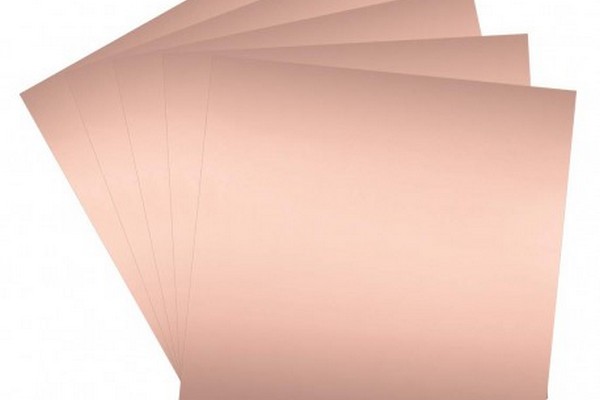Printed circuit board fiber is one of the factors affecting the
price of printed circuit boards, their type and quality, and in this regard, we often hear the term semiconductor, so we decided to dedicate this section of the
Arya Madar Arjomand website to this topic and then to introduce Let's talk about the types of printed circuit fibers. A semiconductor or semiconductors such as silicon with an intermediate energy gap can easily be relatively good conductors. As you may remember from high school chemistry, silicon has a valency of four, similar to carbon, germanium, and tin. If an element such as phosphorus or arsenic, with a valence of 5, is somehow inserted into a silicon crystal, quantum mechanics predicts that it will take up the valence of the rest of the crystal, thus only causing 4 bonds to the surrounding 3 atoms. . In fact, it leaves an extra electron in its outer shell, which is not used in any bond, so it is easily removed.
Phosphorus or arsenic atoms have energy levels within Si bands. The small amount of energy available at a moderate room temperature is enough to bind some of the extra electrons into the conduction bands just where a horizontal electric field can cause them to move in the crystal. As long as the conductive bands are not 100% filled, the material then becomes a conductor.
You should know that it only takes about 0.0001% ("one part per million") of phosphorus or arsenic in Si to turn a fairly good insulator into a fairly good conductor. Here it can be said that phosphorus or arsenic are considered as donors in semiconductors. The act of placing a small amount of donors in intrinsic semiconductors is called doping in the international community.
The mentioned items can be useful for a better understanding of the types of printed circuit fibers that directly affect the cost of ordering printed circuit boards. With this introduction, we will have a look at the types of printed circuit fiber.
The printed circuit fiber can be divided into three main categories: one layer, two layers, or multiple layers. In other words, the single layer fiber has a copper layer and the connection between the circuit bases is on one side, and the other elements are on the other side. other; Therefore, two layers of copper are used in double-layer fibers, but in relation to multi-layers, it should be said that modern technologies are used in their production and their production and preparation is more complicated.
When we talk about
printed circuit board, we mean a set of parts that are implemented on single or multi-layer fiber boards and are finally used in electronic systems. Boards are made from various materials, the most well-known of which are
Teflon,
Fiber and
Rogers, but there are other types, however, all boards are produced with a thickness between 0.2 and 2.3 mm.
Arya Madar Arjomand Company uses up-to-date devices in accordance with international standards and precise software such as
Altium Designer for the construction and design of these circuits, which we have discussed in the previous parts of Arya Madar's expert reviews.

Types of printed circuit fibers
Printed circuit fibers are made of various materials that we are familiar with.
Fiberglass printed circuit board
This type of fiber is a combination of composite with glass fibers and polymer, which is the main material of the composite, and other materials such as glass wool are used for the background. The advantage of this fiber is high temperature tolerance and it is considered stronger than phenolic fibers, which we will learn about later. Another advantage of this type of fiber is the visibility of the bases, which makes for faster repair and easier construction. It should be noted that the high-quality materials and advantages of this product cause its price to be a little high and it is used
in more expensive equipment .

Rogers printed circuit fiber
Rogers is one of the other widely used fibers in the printed circuit manufacturing industry, known for its thinness and high dielectric strength. In fact, Rogers is the name of the company that produces these fibers and supplies fibers using very diverse ingredients and different characteristics. It should not be forgotten that it is possible that in multilayer printed circuit boards it is possible that the layers are made of different materials.

Phenolic printed circuit fiber
In the manufacture of this type of fibers, paper layers are made in a phenol solution (a third type of alcohol). The color of this type of fibers is limited to yellow or brown and golden and they are easily identifiable. One of the important advantages of this type of fiber is its ease of perforation. On the other hand
, they do not use phenolic fiber in expensive devices because its copper layers are separated in the high temperature environment or the heat created by the heat. It is not bad to know that the standard of these types of fibers is produced with a thickness of 1.5 mm or maximum 2 mm.

Aluminum printed circuit board
In the manufacture of this type of fibers, a dielectric thermal conductive layer is used between aluminum and copper foil and it transfers the heat from the surface of the printed circuit to the surface or surfaces below. In other words, this type of fiber is used in boards that generate a lot of heat and is considered one of the most widely used fibers.

The esteemed Arya Madar team provided you with this opportunity so that you can enter your desired features based on the fiber material and size requirements and place your order to get exactly the product you want. If needed, you can also benefit from free consultation and just call the phone numbers listed on the website.